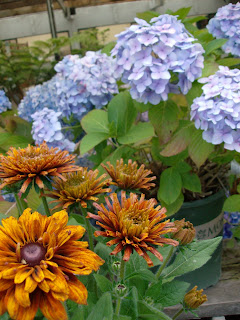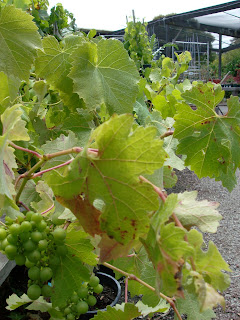Even though it may be a scorching 100 degrees plus in many areas of the country in July, that's the time to start thinking about what you can plant for a fall harvest. There are many cool season vegetables that need to be started in July or August. Still questioning whether it's worth the effort to plant for a second season? There are a few fantastic reasons why you should consider a fall garden:
It extends your fresh food season.
Many crops, especially brassicas (like cabbage, kale, mustard) are less likely to be eaten by pests when planted in late summer/fall.
Some vegetables like collards and kale taste sweeter after a little nip from a fall frost.
Some crops like Brussels sprouts and cabbage produce best when grown in the fall.
Some cool season crops are VERY cold tolerant and can even be harvested after it snows. If you plant now and provide a little frost protection, you could be harvesting fresh green onions, sage, and greens for your Thanksgiving dinner!
Here are a few of our favorite vegetables for the fall garden:
Arugula - This spunky green can be started as late as 2-4 weeks before your first fall frost. Great for fall salads!
Beets – You can enjoy both the green leafy tops and the bulbs. Try our new Beet Bull's Blood. This tender, sweet 1840's heirloom has deep red-burgundy foliage.
Broccoli - A fast grower! With Broccoli Di Cicco, you can get florets in as little as 48 days! If you don’t get florets before frost, remember that the entire plant is edible.)
Broccoli Raab - A delicacy that is hard to find in grocery stores. The tender shoots bud in just 45 days and taste like a cross between broccoli and asparagus.
Collards - Not just for southern cooking! The amazing nutritious green leaves are frost tolerant and can be used when young in salads or when more mature as ‘wraps’.
Endive and Escarole - Delectable and easy to grow. Their texture and snappy flavor makes any salad a gourmet experience.
Kale - You can never have too much Kale! Eat the nutritious baby greens fresh in salads, sauté larger leaves in olive oil with a little garlic, or freeze and add to casseroles and soups during the fall and winter.
Lettuce - All lettuces prefer to grow during cool weather. Start harvesting ‘baby greens’ from the very first shoots. Can’t you just taste that fall salad now? Picture a variety of red and green pretty leaves with a drizzle of olive oil and fresh garlic or warm pears, walnuts, and cranberries.
Mache - You will never find a more delicate, buttery-flavored green for salads! It can also be cooked like spinach. Mache is a little slow to germinate, but VERY cold tolerant once started.
Mustard - Adds interesting, peppery addition to fall salads and stir-fries. The lacy burgundy leaves of Ruby Streaks also make a pretty ornamental in containers.
Peas – Sow now to harvest young shoots for salads and mature pods in fall. In Zone 8 and warmer, peas can be sown in fall for winter harvest.
Winter Radishes – The crisp flavor of Daikon Miyashige White Radish adds a kick to fall salads and stir-fries. Watermelon Mantang Hong is uniquely colored with white skin and red flesh. For a unique fall treat, peel it and sautee with a little butter and salt & pepper.
Spinach - When mulched, Bloomsdale can over winter in subzero temperatures. Our new Monstrueux de Viroflay has tender leaves up to 10" long for lots of greens for fall casseroles and stir-fries while the new Tyee has tender semi-savoyed leaves and matures in just 40 days!
Don’t miss out on planting a fall vegetable garden. When the first cold front drops down or you get your first snow…you’ll thank yourself for that hearty, nutritious meal fresh from your backyard.
And, don't forget about a few flowers to jazz up your fall containers and flower borders! Start pansies and violas now for blooms in about 12 weeks. The orange and black Pansy Bewitched Blend will look great with autumn décor like pumpkins, corn stalks, and hay bales. We've also just added a new variety, Viola Amber Jewels, a gorgeous blend of amber, copper, raspberry and plum. It will add some bright color to complement your fall mums. Sow both of these now for fall blooms.
From Botanical Interests http://www.botanicalinterests.com/gardening_notes_tips/fall_meals.html































